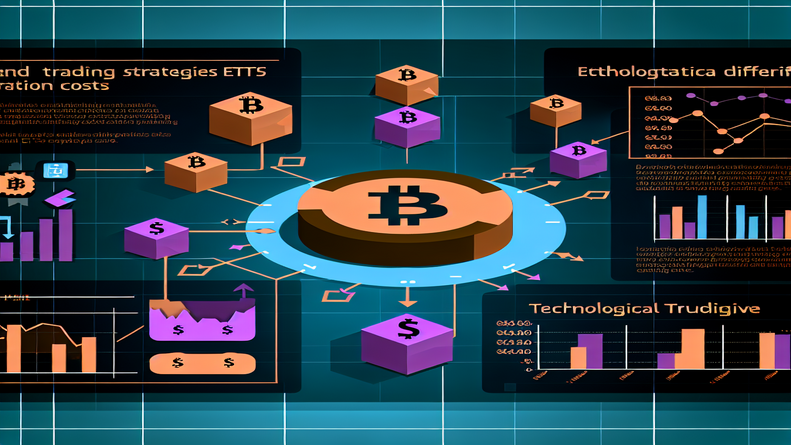December stood as a landmark month for the Bitcoin financial ecosystem, with the U.S. Securities and Exchange Commission (SEC) undertaking a pivotal role in shaping the future of spot Bitcoin Exchange Traded Funds (ETFs). In an unprecedented move, the SEC’s discussions with potential issuers resulted in a significant shift from the traditional ‘in kind’ transfers to a ‘cash creation’ methodology. This decision, which could easily have been dismissed as a mundane procedural tweak, carries weighty implications for every player within the sphere—from the small-time investor to large financial institutions, and even the SEC itself. The ripples of change instigated by these meetings have generated a spectrum of reactions. Opinions have been strewn across the spectrum, from the dismissible extremes to the grounded, thoughtful analyses. However, when the chatter fades into the background, it becomes clear that the transformation’s true impact on investors will remain rather contained. For the issuers, conversely, the situation is markedly different; the adopted changes are not inconsequential and cast an unflattering light on the SEC’s decision-making process.
ETF Mechanics Uncovered: The Foundation of Exchange Traded Funds
Understanding the complexities of Exchange Traded Funds calls for a glimpse into their foundational structure. Central to every ETF’s operational framework is a nexus of Authorized Participants (APs)—entities with the unique ability to trade a pre-set amount of underlying assets or cash against a fixed quantum of ETF shares, subject to a specific fee. Let’s consider a hypothetical yet standard scenario: Should ‘in kind’ creation be permitted, an exchange could involve the trade of 100 Bitcoin for 100,000 ETF shares. Yet, with the newly enacted cash creation approach, these dynamics shift. The issuer is mandated to reveal, in real time, the cash value needed to acquire 100 Bitcoin, in sync with the volatile price oscillations of Bitcoin. Furthermore, they must disclose the sum obtainable through the redemption of 100,000 ETF shares—also in real-time. Subsequent to APs’ cash infusion, the issuer’s obligation is to procure the corresponding quantity of Bitcoin to honor the fund’s contractual commitments or to facilitate the sale of Bitcoin in the event of a fund redemption. This mechanism, which transcends across all ETF variants, unequivocally invalidates the scepticism around cash creation—a fund not being entirely backed by Bitcoin holdings is a misplaced concern. Although the act of creation could cause a transient lag before actual Bitcoin acquisition by the issuer, any delay amplifies the risk taken by the issuer. Should they pay beyond the quoted cash price, the fund would incur a negative cash balance, diminishing the Net Asset Value (NAV) and adversely affecting performance—a scenario any competitive issuer would spurn.
A Balancing Act: Crafting the Right Creation and Redemption Environment
The inducement to quote a bloated cash creation price over the actual market value of Bitcoin is palpable—for redemption the reverse holds. Such a manoeuvre, however, is fraught with consequences. An inflated spread between the cash amounts earmarked for creation and redemption would likely lead APs to widen their own market spreads. This chain reaction could burgeon into wider spreads for individual Bitcoin ETF issues and distort the expected market spreads they might have attained through ‘in kind’ processes. The real challenge for issuers, thus, is to strike a delicate balance between the quoting of tight spreads and effective trading at or better than these quotes. Such a task entails sophisticated technological prowess. For instance, contemplating a cash quote for a substantial Bitcoin amount over a singular exchange versus a multifaceted strategy spanning several regulated U.S. exchanges illustrates the complexity and necessity of innovative trading algorithms. Such technology must be agile enough to navigate a fragmented Bitcoin marketplace—an ecosystem where traditional financial systems falter.
Innovation at the Fore: Adopting High-End Trading Technology
 While it’s improbable that major Bitcoin ETF issuers will confine their trading to a single exchange, the variety in the issuer’s trading strategies could substantially influence the fund’s pricing and operational costs. Those that harness premier algorithmic trading technologies to manage their spreads will stand to offer funds with enhanced performance metrics. This technological differential will not only become a battleground for market share but is also likely to introduce some variance in the overall performance and costs among issuers.
While it’s improbable that major Bitcoin ETF issuers will confine their trading to a single exchange, the variety in the issuer’s trading strategies could substantially influence the fund’s pricing and operational costs. Those that harness premier algorithmic trading technologies to manage their spreads will stand to offer funds with enhanced performance metrics. This technological differential will not only become a battleground for market share but is also likely to introduce some variance in the overall performance and costs among issuers.
The SEC Decision: A Reflection on Regulatory Boundaries
The vital question then surfaces, why would the SEC insist on the use of Cash Creation/Redemption? The rather pedestrian answer is regulatory in nature. Authorized Participants, established as broker-dealers, come under the ambit of SEC regulation and corresponding SRO oversight. The SEC’s non-approval for regulated broker-dealers to directly engage in spot Bitcoin trading painted the agency into a corner, requiring a cash-based approach instead of ‘in kind’—a far more straightforward explanation than the convoluted conspiracy theories populating discourses.
Spot Bitcoin ETFs: The Investors’ Perspective and Outlook
For the Bitcoin community, the birth of spot Bitcoin ETFs marks a significant stride, yet the intricacies within the contractual mechanisms warn of a labyrinthine landscape. Astute investors would do well to delve into the trading strategies and transactional policies that each issuer enacts. Beyond the discernible factors like custody practices and fee schedules, the trading strategies—even though often overlooked—could sway the investor’s balance sheet considerably.
In Perspective: The Cumulative Cost of Ignorance
The introduction of spot Bitcoin ETFs undoubtedly heralds an evolutionary leap for the Bitcoin industry, standing as a beacon of financial innovation. However, the success of an investor’s journey in this new terrain is contingent upon a comprehensive understanding of each issuer’s approach to the gamut of creation and redemption processes. The cost of neglecting these minutiae? A potentially significant dent in an investor’s assets.Are you poised to delve deeper into this innovative vista and redefine the technological horizons of your enterprise? Forge a connection with me on LinkedIn to embark on a transformative journey. Together, let’s tap into the remarkable potential of the Bitcoin ETF landscape and steer towards a future of thriving possibilities.
